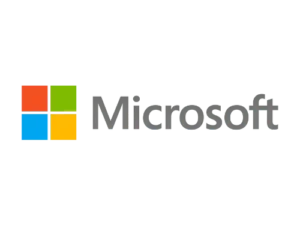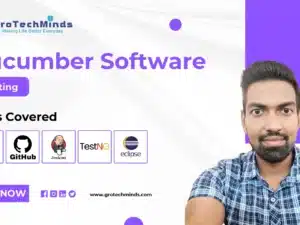Automation Testing with Python
- Description

8:00AM - 9:00AM IST
9:00PM to 10:00 PM IST
Python selenium overview
Python Selenium Course Outcome
- Acquire proficiency in using basic Selenium commands within a Python environment for effective interaction with web elements.
- Explore various locators in Selenium with Python, such as ID, Name, XPath, CSS, etc., to identify and interact with elements on a web page.
- Develop skills to handle dynamic elements and situations in web applications using Selenium with Python.
- Master the art of cross-browser testing by leveraging Selenium WebDriver with Python for compatibility across different browsers.
- Understand and implement data-driven testing techniques with Selenium and Python for efficient and scalable test automation.
- Integrate Selenium with popular Python testing frameworks such as pytest or unittest for better test organisation and reporting.
- Learn how to handle pop-up alerts, iframes, and multiple browser windows during automated testing using Selenium with Python.
- Master Selenium capabilities with Python for handling cookies and interacting with dropdown menus.
- Develop skills in identifying and resolving issues through effective troubleshooting and debugging techniques within a Python environment.
- Explore advanced topics such as headless testing, handling SSL certificates, and more for comprehensive automation coverage using Python and Selenium.
Master Python Selenium Tools





Python Selenium course features
- Comprehensive Curriculum
- Expert Instructors
- Interactive Learning
- Weekly Tests
- Feedback and Assessment
- Real time Projects
- Continuous Support
- ISO Certification
- Mock Interview
- Unlimited Placement Support
Introduction to Python
• Python Programming Language
• Introduction To PYTHON
• Python Language advantages and applications
Setup and Configuration
• Python Installation – Windows
• Configuration Of Python – Windows
• Package Management Using PIP
Understanding Variables And Data Type
• Python Terminal Walkthrough
• Understanding Objects And References
• Variables Rules
• Numbers Data Type And Math Operations
• Numbers – Exponentiation And Modulo
• Arithmetic Order Of Precedence
• Conditional Logic – If Else Conditions
• While Loop Demo
• Break Continue And While/Else
• For Loop Demo
• Iterating Multiple Lists – Using the Zip Function
• Using Range Function In For Loop
• Strings Formatting
Advanced Data Types
• Python string fundamentals, String Methods
• List And Accessing The Elements
• List Methods
• Working With Dictionary
• Nested Dictionary
• Dictionary Methods
• Working With Tuple
Comparison And Boolean Operators
• Working With Comparators
• Understanding Boolean Operators
• Boolean Operators – Order Of Precedence
Functions/Methods – Working with Reusable Code
• Understanding Methods
• Working With Return Values
• Working With Positional / Optional Parameters
• Understanding Variable Scope
• More Built-In Functions
Classes – Object Oriented Programming
• Understanding Objects / Classes
• Create Your Own Object
• Create Your Own Methods
• Inheritance
• Polymorphysm/Incapsulation/Data Abstraction
Exception Handling
• Exception Handling Demo
• Finally And Else Block
Modules:
• Builtin Modules
• Create Your Own Modules
Working With Files
• How To Write Data To A File
• How To Read/Write A Excel Files
• How To Read/Write A JSON Files
• How To Read A Text Files
Introduction
• Installing Python bindings for Selenium
• Drivers
• Downloading Selenium server
How To Inspect Elements Different Browsers – Add-Ons?
• How To Inspect Elements Using Firefox Dev Tools?
• Firefox Add-On – Try XPath
• How To Inspect Elements Using Chrome Dev Tools?
• Chrome Extension
• Tricks To Generate XPath
Selenium WebDriver -> Setup and Installation
• Selenium WebDriver Installation
• How To Install Selenium Plugin To PyCharm and Eclipse?
Selenium WebDriver -> Running Tests On Various Browsers
• Running Tests On Firefox
• Running Tests On Google Chrome – Windows
• Requirements To Run Tests On IE
• Running Tests On Internet Explorer
• How To Set Drivers In System Path – Windows
Selenium WebDriver -> Finding Elements
• Understanding Elements And DOM
• Find Element By Id And Name
• Understanding Dynamic Ids and Selenium Exception
• Find Element By XPath And CSS Selectors
• Find Element By Link Text
• Find Element By Class Name And Tag Name
• Understanding “By” Class
• How To Find List Of Elements
CSS Selectors – Advanced Locators
• Using Ids with CSS Selectors To Find Elements
• How to Use Multiple CSS Classes To Find Elements?
• Using Wildcards with CSS Selectors
• How To Find Child Nodes Using CSS Selectors?
Xpath – Advanced Locators
• Difference Between Absolute And Relative Xpath
• How to Build An Effective Xpath
• Using Text to Build An Effective Xpath
• Build Xpath Using Contains Keyword
• How To Find Parent and Sibling Nodes
Selenium WebDriver -> Working With Web Elements
• Browser Interactions Introduction
• Browser Interaction
• How To Click And Type On A Web Element
• How To Find The State Of A Web
Element (Disabled And Enabled Elements)?
• Radio Buttons And Checkboxes
• Working with Elements List
• Understanding Dropdown Elements
• Working with A Dropdown Element
• How To Work With Hidden Elements
• Working With Hidden Elements – Practical Example
Selenium WebDriver -> Useful Methods And Properties
• How To Get The Text On Element?
• How To Get Value Of Element Attribute?
• Generic Method To Find Elements
• How To Check If Element Is Present
• How To Build Dynamic XPath
Selenium WebDriver -> Wait Types
• Implicit Wait Vs Explicit Wait
• Implicit Wait
• Explicit Wait
• Generic Method To Work With Explicit Wait
Selenium WebDriver -> Advanced
• Calendar Selection Introduction
• Calendar Selection
• AutoComplete Introduction
• AutoComplete
• How To Take Screenshots
• Generic Method To Take Screenshots
• Executing JavaScript Commands
• How To Find Size Of The Window
• How To Scroll Element Into View
Selenium WebDriver -> Switch Window And IFrames
• How To Switch Window Focus
• Switch To Window
• How To Work With IFrames
• Switch To IFrame
• Handling JavaScript Popup
Selenium WebDriver -> Working With Actions Class
• Mouse Hover Actions
• How To Drag And Drop Element On A Web Page
• Working with Sliders Actions
Logging Infrastructure
• Introduction To Logging Infrastructure
• Changing The Format Of Logs
• Logger – Console Example
• Logger – Configuration File Example
• How To Write A Generic Custom Logger Utility
Unit test Infrastructure
• Writing First Test Case
• How To Implement Class Level SetUp And TearDown Methods
• How To Assert A Test Method
• Important Note For Next Lectures – Windows
• How To Run Code From Terminal
• How To Create A Test Suite
Pytest -> Advanced Testing Framework
• Pytest Installation And First Script
• Pytest Naming Conventions
• How To Work With PyTest Fixtures
• Pytest Fixture Update
• Multiple Ways To Run Test Cases
• Conftest -> Common Fixtures To Multiple Modules
• How To Maintain Run Order Of Tests
• Running Tests Based On Command Line Arguments
• Structure Tests In A Test Class
• How To Return A Value From Fixtures
• Install PyTest HTML Plugin
• How To Generate HTML Test Report
Automation Framework – Part 1
• Automation Framework Introduction
• Understanding Framework Structure
• Test Scenario Without Framework
• Convert Test Case To Page Object Model Framework
Refactor Your Page Object Class – Part 1
•Build Your Custom Selenium Driver Class
•Refactor Your Page Object Class – Part 2
Automation Framework – Part 2
• Add Logging To Automation Framework
• How To Verify Test Case Result
• Complete Login Page Test Cases
• Create Conftest To Implement Common Setup Methods
Automation Framework – Part 3
• How To Assert Without Stopping Test Execution
• Implement Screenshots In A Framework
• Taking Screenshots On Test Failure
• BasePage And Util Concept Introduction
• Inheriting BasePage Class
Data Driven Testing
• Setup And Configuration
• Data Driven Testing
• Utility To Read CSV Data
• Multiple Data Sets Test Case
Running Complete Test Suite
• How To Manage Navigation In Framework
• Refactor Login Tests
• How To Run A Test Suite
• Running Test Suite On Chrome
- Students or recent graduates
- Quality assurance professionals who want to specialize in Software testing
- Individuals who are looking to transition into a career in software testing
- Software developers who want to expand their skill set and learn more about Software testing
- Project managers Non IT person planning to move to IT
- Experienced Manual Tester Work from Home Aspirants



















Automation testing with Python uses Python scripts to automate the testing of software applications, ensuring they function correctly. It leverages libraries like Selenium WebDriver and Pytest for efficient and accurate testing.
A complete curriculum, knowledgeable teachers, practical projects, flexible educational options, and Career support—including help with resume creation and job placement—are all provided by learning with GroTechMinds. This sets you up for an automated testing profession that pays well.
GroTechMinds Python course covers a wide range of topics including basic syntax, data types, control structures, functions, object-oriented programming, file handling, and more.
Yes, newcomers without any prior programming expertise are taken care of in the GroTechMinds Python course. It begins with the fundamentals and works its way up to more advanced concepts.
Selenium Webdriver is a powerful tool used for automating web browsers. It allows you to control web browsers and simulate user interactions to test web applications.
Python, Java, C#, and Ruby are among the programming languages that Selenium Webdriver supports. You can write your automation scripts in whichever language you are most familiar with.
By visiting our website and following the registration instructions, you can sign up for the Python online course. You can begin learning at your own pace as soon as you join and have access to the course materials. Additionally, you can text or call our expert team at 8009900785, and they can assist you with the enrollment procedure for an online Python course.
There aren’t any particular requirements to enrol in the Python online course. On the other hand, it can be useful to have a fundamental understanding of programming ideas.
Many operations, such as web scraping, data extraction, testing, task scheduling, file manipulation, and more, can be automated with Python.
Yes, automating routine tasks is a great use case for Python. For automation applications, its ease of use, readability, and wide range of support make it a great option.
GroTechMinds Institute’s Python course is unique because of its broad curriculum, practical approach, knowledgeable professors, and focus on real-world applications.
The duration of the Python online course at GroTechMinds is 2 months and 15 days. It covers basic concepts of Python to advanced knowledge, including real project work assessment.
Graduates of our Python course are well-equipped to pursue various career paths including software development, data analysis, web development, automation testing, and more. Our career services team also provides assistance with job placement and interview preparation.
After learning Python Automation Testing from GroTechMinds You may pursue Career as an Automation Test Engineer, QA Automation Engineer, Software Development Engineer in Test (SDET), Test Automation Architect, and DevOps Engineer after learning Python automation testing.








